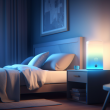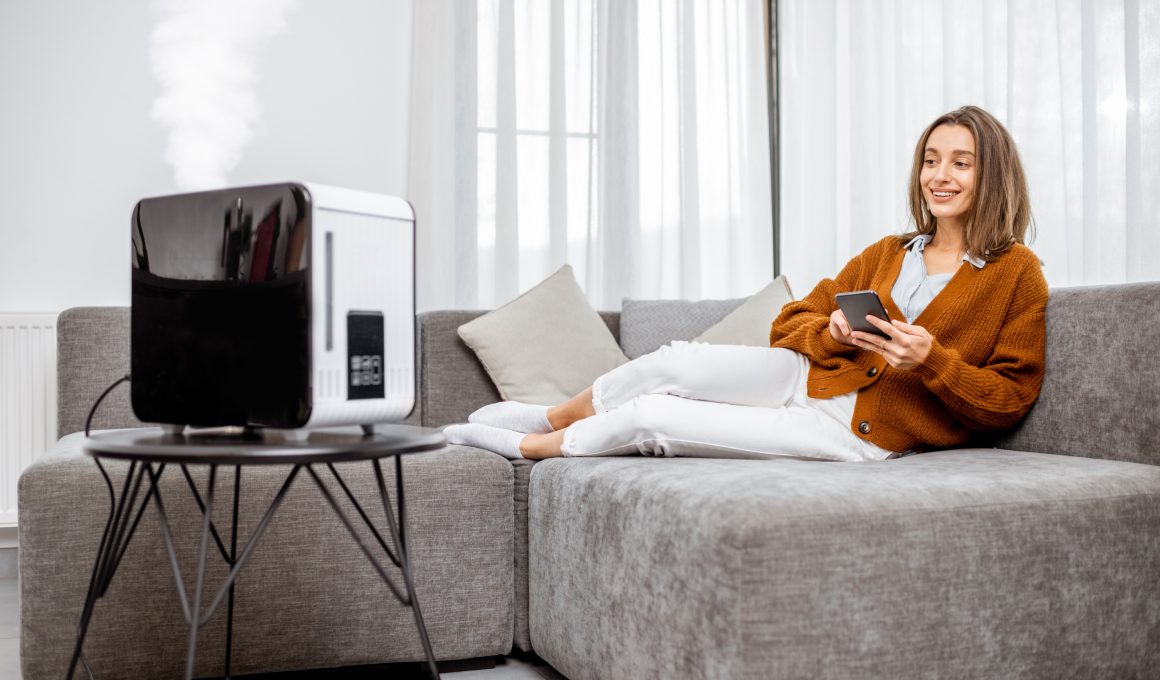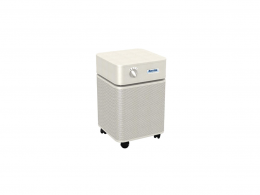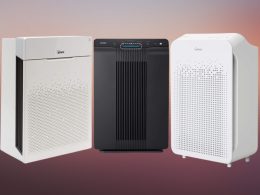If you want to know the difference between an air purifier and a humidifier, the most important thing you might want to consider is how they affect air quality.
Air purifiers and humidifiers have similar tasks, but they differ in the process of completing them. In this article, you will find the main differences between an air purifier and a humidifier, the types of each, how they work, and which one is best for you.
What Is the Difference Between an Air Purifier vs. Humidifier?
The main difference between an air purifier and a humidifier is that the first gets rid of allergens and pollutants from the air, while the latter adds moisture to the air to avoid the presence and problems caused by dry air.
There are other differences between the two, starting with how they work, how they affect the air you’re breathing, and the results of using any of them. Below we will detail their differences more thoroughly.
Air purifier
An air purifier is a device that cleans the indoor air in the place you live. It contains multiple filters that catch allergens and other polluted particles and releases clean air into the environment. Air purifiers are very much needed, especially in urban areas where the air quality is relatively low. But, it is essential to know that cleaning the machine and changing its filters regularly is a must for an air purifier to perform at its best.
Humidifier
Humidifiers are different from air purifiers. They add moisture to the air and raise the humidity levels to a desirable level. The machine has a water spraying system with several modes that you can use. The system can throw steam into the air by boiling the water inside the machine beforehand and spreading droplets of water into the air directly.
Another important feature of the device is the ability to control the humidity level in the house automatically. That means the machine automatically stops when the desired humidity level is reached in the room. While doing this, the air humidifier contributes to lowering the chances of developing several respiratory diseases and making better conditions for those who already have such concerns.
This device must be kept under regular hygiene maintenance, just like an air purifier. The U.S. Environmental Protection Agency suggests using distilled water for the humidifier, as tap water might contain particles that, when spread in the air, might cause health complications.
Types of Air Purifiers
There are several types of air purifiers with their differences, mainly depending on the type of filter they use. Knowing the filter variations is important because it can guide you in choosing the most appropriate filter for your needs. Below we will list and analyze some types of air purifier filters, including HEPA filters, carbon filters, negative ionic filters, and UV light filters.
HEPA filtration
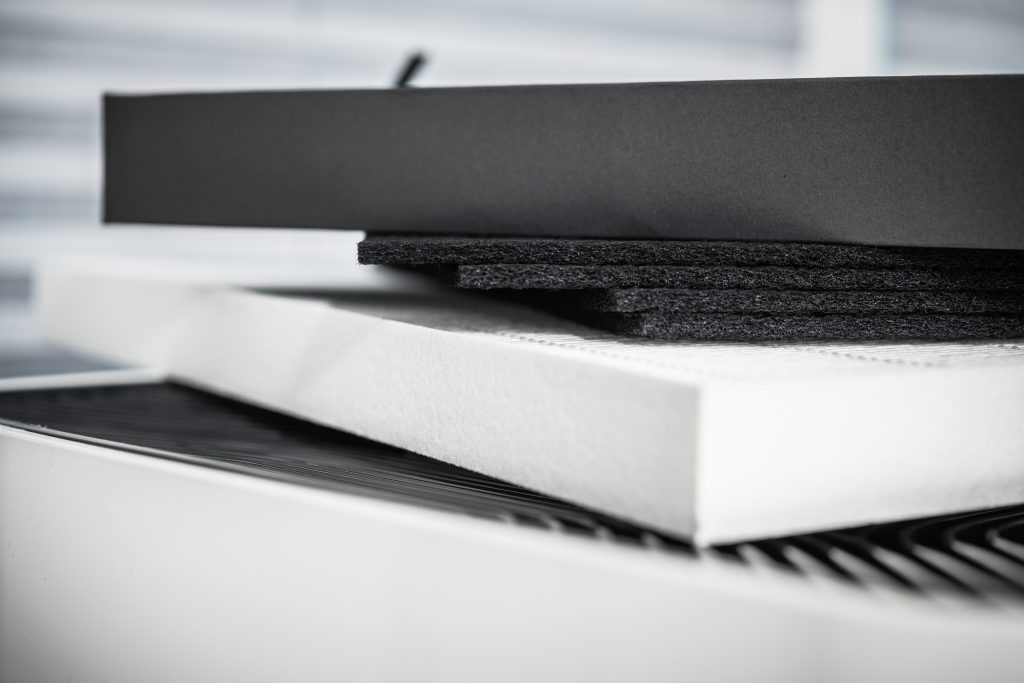
HEPA filters are the most commonly used filters and, in general, the most effective. The acronym stands for High-Efficiency Particulate Air. This filter can reduce up to 99.97% of bacteria, mold, and other pollutants in the air, according to the U.S. Environmental Protection Agency. This type of filter can capture particles as small as 0.3 microns, which is the most penetrating size of particles. This means the HEPA filter catches bigger or smaller particles with higher efficiency.
Carbon filtration
Carbon filters offer another effective odor cleaning option. The carbon filter has many pores on its surface, and odor molecules stop on the walls of those pores while clean air passes through. This process is called adsorption. The higher the number of pores on the carbon filter provides more surface area for pollutants to get stuck. This fantastic filter greatly contributes to the cleanliness of the air released by an air purifier.
Negative ionization
Cleaning the air through negative ions is an interesting chemical process. Negative ions are molecules that have gained an electron, and that gives them an electrical charge which they transmit to the pollutant molecules making the drop. Negative ions are released in the air, then they attach with pollutants, and together they fall into hard surfaces getting easier to clean manually.
Ultraviolet (UV) light
Ultraviolet light has been used previously to clean different surfaces. It has been included as a filter in air purifiers as well. The U.S. Environmental Protection Agency confirms that this type of filter does a great job of eliminating pollutants from indoor air. They irradiate the germs using short waves of UV light. That way, they inactivate mold, viruses, and bacteria. They make for another effective air purifier filter to use in our daily lives.
Types of Humidifiers
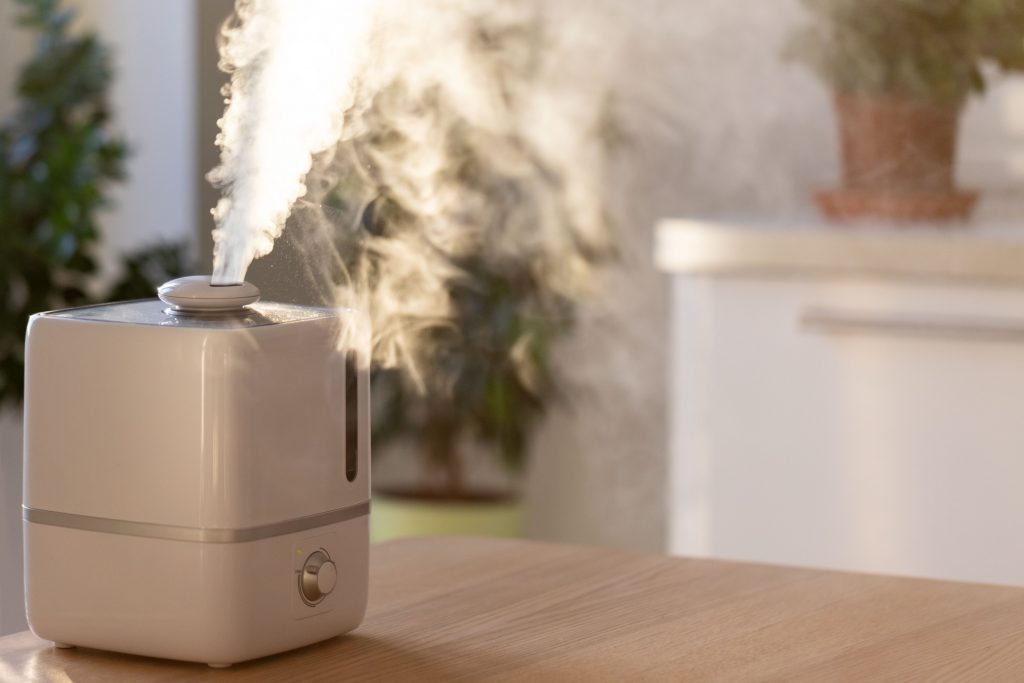
Like air purifiers, humidifiers have variants as well. They can be used in different forms, and each of them offers different results and productivity rates. Below we will list and analyze some types of humidifiers and the details that make them differ in functionality and effects.
Warm mist
Warm and cool mist humidifiers’ primary purpose is to moisturize the air. The warmth of the water vapor reaches an equal temperature when it enters the respiratory system. Warm mist humidifiers make less noise when working because they don’t contain an internal fan, and they warm the air in the room as they spread the steam.
The downside of a warm mist humidifier is that it releases warm steam or vaporized water, which can burn your baby or pet if it gets too close. Another disadvantage is that this type of humidifier consumes more energy than the cool-mist ones.
Cool mist
The cool mist humidifier works similarly to the warm mist, but the cool-mist humidifier is more efficient in easing coughing, sneezing, and other cold symptoms. This type of humidifier works better around children or pets, and it can be used for more extended periods during the year because it releases a chilling effect. Another benefit is that they consume less energy than the warm-mist humidifier.
But there are some downsides to this type of humidifier. They are more likely to collect pollutants, so they must be cleaned regularly and adequately, but don’t worry, they are very easy to clean. Another disadvantage is that they make more noise than the warm-mist humidifier due to the external fan.
Ultrasonic
The ultrasonic humidifier is one type of cool-mist humidifier. They have smaller fans which makes them less noisy, and they spread the water in a much more delicate mist. And like the other cool-mist humidifiers, the ultrasonic also spends less energy working. They are also easy to clean and offer a good option for everyday use.
How Do Air Purifiers and Humidifiers Impact Your Health?
As explained at the beginning of this article, air purifiers and humidifiers impact your health differently. Air purifiers work on catching and neutralizing bacteria, allergens, mold spores, and other pollutants. Cleaning the air off these particles makes your indoor environment a better place to live and raise your kids.
Humidifiers also affect your health by keeping the air moisture at the desired level in an indoor environment. By doing that, they help in easing cold symptoms, such as coughing and sneezing, and they also release the respiratory system, especially in babies.
In general, air purifiers and humidifiers positively impact your health but must be used properly. And remember, you should regularly clean them or replace their filters to maintain their effects at the highest possible level.
Air Purifier vs. Humidifier: Which Works Better for Different Conditions?
There are differences between air purifiers and humidifiers based on the effect you want to reach. Because they work differently, their impact also varies. Read on to learn which one works better for your needs.
Air purifier vs. humidifier for babies

If dry air is causing your baby problems such as cough or other cold symptoms, the solution is a cold mist humidifier that will help clean babies’ nasal passages.
On the other side, an air purifier will remove particulate pollutants from the air. It will also get rid of mold spores, viruses and bacteria, pollen, pet dander, and more, contributing to better breathing conditions for the baby. So, if your concern is polluted air rather than dry air, we suggest you go with an air purifier to reach the desirable air cleanliness in your baby’s room.
Air purifier vs. humidifier for allergens
For allergies, the air purifier is better than the humidifier. Air purifiers trap most allergens using a HEPA filter, while molecule technology can even destroy them directly in the air.
On the other hand, air humidifiers can be bad for allergies because the increase of moisture in the air can add more pollutants, leading to stronger symptoms and allergy outbreaks. Also, not cleaning it the best way can regularly add more pollutants to the air, which is bad news for you.
Air purifier vs. humidifier for asthma
Asthma attacks are triggered mainly by pollutants floating in the air. Air purifiers help clean the air and make it less likely for asthma attacks to happen.
On the opposite, air humidifiers add moisture to the air, creating conditions for bacteria, mold, and other pollutants to grow, making asthma attacks more likely to happen. This leads us to one conclusion: air purifiers are a better option to use for easing asthma attacks and symptoms.
Air Purifier vs. Humidifier: Which One Should You Choose?
Air purifiers are more effective than humidifiers if one of them must be chosen. They have similar aims, but the productivity of the air purifiers is more significant than that of the air humidifier.
While a humidifier adds moisture to the air and helps the respiratory system function better, an air purifier has a better effect. It eases cold symptoms, bacteria, mold spores, and other pollutants. It also helps to alleviate allergy symptoms and asthma. So, if choosing is a must, the better option is an air purifier.
Can You Use Both an Air Purifier and Humidifier Together?
Air purifiers and humidifiers can and are encouraged to be used together. In a form, they complement each other. The air purifier helps clean the air off bacteria, viruses, mold spores, and allergens and positively impacts people with asthma. While completing all these functions, it might cause some dryness in the indoor air. That’s where the air humidifier comes in handy. It adds moisture to the air, avoiding such dryness, creating better conditions for the respiratory system, and easing cold and asthma symptoms.
Since they have different functions but positively contribute to the same aim, the best way of using them is together. The combination of both helps create better and healthier indoor air quality and environment.
The Bottom Line
In conclusion, using air purifiers and humidifiers has become a necessity nowadays. The article tried to explain the difference between them and how they contribute to air quality. Air purifiers are slightly better because of some abilities described throughout the article. But that doesn’t make the humidifier less important. If possible, get both and enjoy a fresh breath every day.




